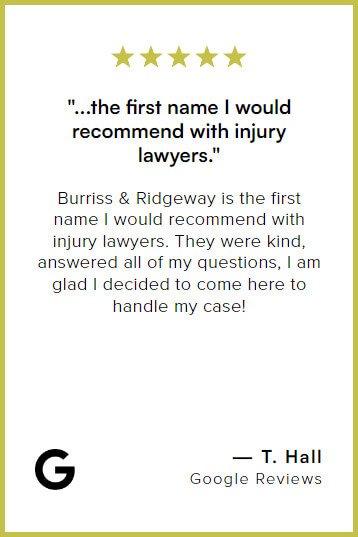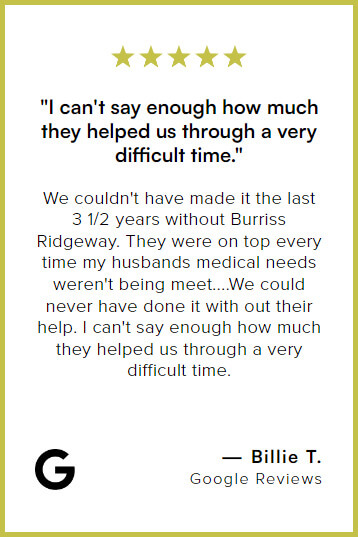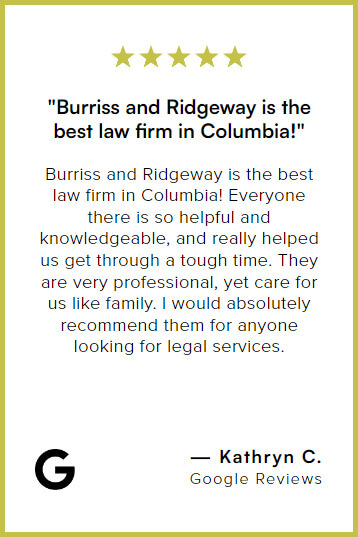When you first look at a police report for a car accident, you may be completely overwhelmed. The report just looks like a bunch of boxes with dense words all over the place. Ultimately, all of the information you need about your accident is right there in the report, but sorting it out can be difficult.
When reading a police report for a South Carolina traffic collision, decide what information you want and then start looking for that specific information to avoid getting bogged down by the clutter. For example, if you need the contact details about the person who hit you, those are under the report’s occupant’s section. Anything encoded with numbers can be decoded by looking at the chart in the same section of the report.
Ultimately, an attorney can also help walk you through the report to help you get all of the information you need. For help with your car accident case, call the South Carolina car accident attorneys at Burriss Ridgeway Injury Lawyers. Call us today at (803) 451-4000 for a free case review.
What Information Is in Each Section of a Police Report for a South Carolina Car Accident?
Although there are no clear headers or lines breaking out a police report into different sections, each police report does indeed have a few different areas that discuss different categories of information. From the top down, here’s what’s in each part of your police report:
Location, Time, and Date Info
The top part of the first page on a police report lists where and when the accident took place. This can include specifics down to the intersection, nearest cross-street, or ramp where the accident took place. Rather than being written out in plain English, the information is put together from various options on the form. Was the road an interstate, a U.S. Route, or a South Carolina route? The report will tell you, but that information will be selected from a list rather than written out.
One very important piece of information you’ll need is the county where the accident took place. To sue for damages, you’ll have to file your case in the county where the accident happened (in most cases), so make sure to look for what county is listed on your report.
Driver/Pedestrian Info
Under the part that shows a letter and a 6-digit number separated by a dash, you’ll find the information about the drivers or pedestrians involved in the crash. This section will have their name, address, insurance information, license plate number, vehicle make and model, and other information about who they are, what they look like, and what car they were in.
All of this information is absolutely vital because it lets your Columbia, SC car accident lawyers know whom to sue for your injuries. It also lets you know what insurance companies to contact and helps refresh your recollection about what cars were involved in the crash if you’ve forgotten the make, model, color, or other details.
.
Sketch of Accident
On the bottom left of the form’s first page, the officer can sketch out a diagram of the crash. Their artistic skill will not be what makes or breaks your case since these details are also listed elsewhere on the form. But the visual can be handy in court or to help refresh the police officer’s memory of the accident scene. Your South Carolina car accident injury lawyers can also use this sketch to help create exhibits for trial.
Accident Details
On the bottom right of the first page is a section devoted to estimating how much damage the accident caused. It also says who owned the damaged property. This will be important for you as the victim of the accident, but there might be a more important section on the next page: the injuries section.
Investigating Officer Info
At the bottom of the first page is where the officer who investigated your accident lists their info: name, contact info, department, badge number, etc. This can help you get in touch with the officer who investigated the crash, which is especially helpful if you need to call them to testify about the accident.
Injury Details
The top of the second page has a chart that goes across the whole width of the page for entering personal details and injury information. The information will be input as numbers that correspond to the matching details. To convert this code to plain English describing the injuries, just look up what each box’s number means in the key below the boxes.
This section will describe things like where a broken bone was, whether the airbag deployed, whether they were wearing a seat belt, and more. These details can be vital to helping your Columbia personal injury lawyer prove your injuries. It will also list biographical info about the injury victims, such as age and race.
Sequence of Events
The Sequence of Events section encompasses most of the left side and center of the second page. This part will also be encoded, detailing what happened to cause the accident (Was an animal in the road? Did someone run a red light?); what was hit (an animal, a car, a stationary object), what side of the car hit the other thing, what angle it collided at, what type of vehicle was involved, and more. Again, this information is encoded with numbers from the chart, so you can look up what they mean right there on the form.
There is also a chart showing diagrams of vehicles so the officer can record what parts were damaged in a visual way.
Alcohol/Drug Involvement
Within the Sequence of Events section on the right side of the form is a chart that says whether the officer knows of any alcohol or drug involvement. If either driver was tested for drugs or alcohol or suspected of being under the influence, that will be noted on the form.
If the report notes that someone was, in fact, under the effects of drugs or alcohol, that is not definitive proof that that’s true. That does, however, give your South Carolina personal injury lawyer notice to follow up and request copies of test results to use as evidence in your case.
More Accident Details
The bottom of the second page lists things like the weather, lighting, and other contributing factors. Even details such as whether the ground was straight and level, whether there were traffic signals, and whether there was roadwork on the road will be listed here. This info can go a long way toward proving the totality of the circumstances in your crash case.
Call Our South Carolina Car Accident Lawyers for Help Today
If you were hurt in a car accident, get a copy of your police report and contact our Lexington car accident lawyers. We can help you understand your report and provide a free case consultation. Call us today at (803) 451-4000.






